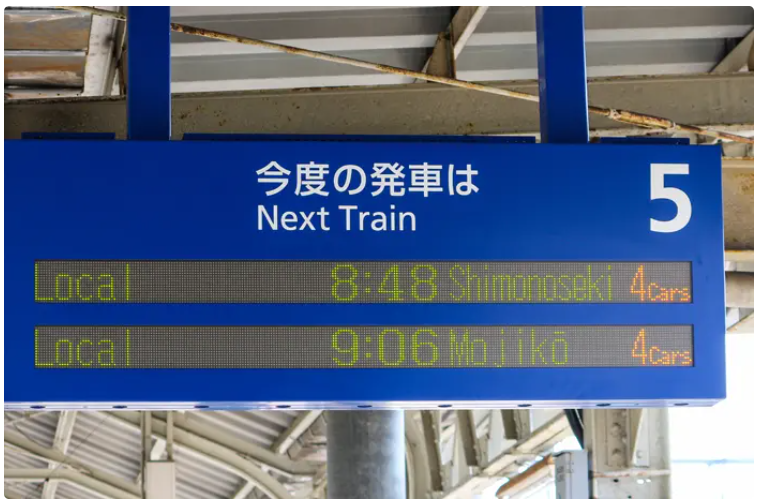Rewind the clock 30 years to 1993, red, orange, and yellow-green LEDs were readily mass produced and available in the market. However, although blue LEDs utilizing different substrate materials were available in the market, production quantities were very limited. In fact, these blue LEDs were not as bright as the red and yellow-green LEDs. Therefore, because of the brightness difference between these 3 colors, balance could not be achieved between the three primary colors (red, blue, yellow) necessary to reproduce any color, including white. Various manufacturers and research institutes had been working to develop practical blue LEDs. If you are familiar with the period around the early 1990, you may remember that all LED Departure Boards installed at train stations, for example, were displayed either monochrome (red or orange or yellow-green) or tri-color. Due to the lack of practical blue LEDs, white or full colored displays were not possible. Fast forward 30 years, as the three primary colors of red, green, and blue with balanced brightness are available, more and more departure signs are being displayed in full color.

Train Departure board using yellow-green/orange at the station
Under such circumstances, Nichia had succeeded in developing a blue LED chip that was 100 times brighter and lasted longer than conventional LEDs. However, there were still high hurdles to overcome before it could be announced publicly in the newspapers. Nichia's basic policy was to sell the packaged blue LEDs1, not the blue LED chips themselves that were just successfully developed. Therefore, work was still to be done. Until then, Nichia's core business was mainly chemicals such as phosphors, evaporation materials, and raw materials for pharmaceuticals. The business-related to LED was limited to the materials for infrared LEDs and the manufacturing of wafers. Even though Nichia had little experience in manufacturing electronic components including LED packages, Nichia decided to complete the newly developed high brightness blue LED to commercialized LED packages. This became Nichia's basic policy to develop and manufacture not only the world's first high brightness blue LED chips, but also LED packages. With no prior experience, all employees involved had started to run towards the preparation for the commencement of mass production, involving tasks such as the development of equipment and construction of the production lines.





 CN
TW
EN
CN
TW
EN






